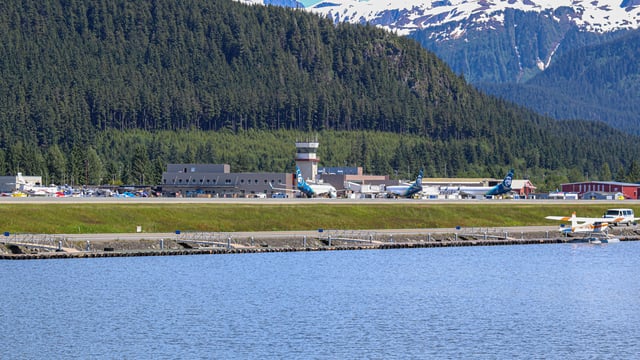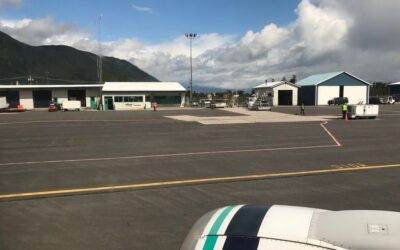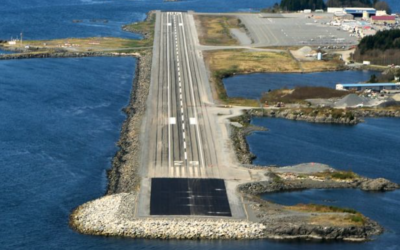Juneau International Airport (JNU) serves as a vital link not only to the city of Juneau but also to the broader expanse of Southeast Alaska. Nestled in the scenic backdrop of the Gastineau Channel and the lush forests of the Tongass National Forest, JNU stands as a testament to Alaskan resilience and adaptability in the face of geographic challenges. In this blog post, we’ll dive into the various aspects of JNU, exploring its history, facilities, unique features, and the pivotal role it plays in connecting the remote areas of Alaska.
The Historical Journey of Juneau International Airport
Early 20th Century Beginnings
The genesis of Juneau International Airport can be traced back to the early decades of the 20th century, a time when the concept of air travel was still in its nascent stages. Initially serving as a base for bush pilots and small aircraft, JNU was more than just an airfield; it was a beacon of connectivity for the remote communities in Southeast Alaska. These early years were marked by pioneering aviators who braved the challenging Alaskan terrain and weather, laying the foundation for what would become a pivotal institution in Juneau.
The Bush Pilot Era
The era of bush pilots is a remarkable chapter in JNU’s history. These pilots, often flying single-engine aircraft, provided critical services including mail delivery, medical transport, and supply runs to isolated communities. Their bravery and skill were crucial in a landscape where roads were, and remain, scarce. The airport, in its primitive form, served as the hub for these essential operations, slowly building its reputation as a lifeline for the region.
Expansion and Modernization: Mid-20th Century
World War II and Beyond
The impact of World War II was a turning point for JNU. The strategic importance of Alaska during the war led to significant investments in infrastructure, including the expansion of the airport. Post-war, as commercial aviation began to take off globally, JNU evolved to accommodate larger aircraft, marking the beginning of a new era of air travel for Juneau and its neighboring areas.
The Jet Age and Increased Connectivity
Entering into the jet age, JNU underwent further transformations. The introduction of jet services in the latter half of the 20th century was a significant milestone, reducing travel times and linking Juneau more closely with the rest of the United States. This period also saw the construction of new runways, terminal buildings, and the introduction of modern air traffic control systems, bringing JNU into the modern age of aviation.
The Role of JNU in Regional Development
Economic and Social Impact
JNU’s development mirrored and aided the growth of Juneau and Southeast Alaska. As the airport expanded, it facilitated increased tourism, bolstering the local economy. It also became a crucial player in the region’s economic activities, supporting industries like fishing and mining by providing essential transportation for both people and goods.
Integration with the Community
Throughout its history, JNU has maintained a strong relationship with the community of Juneau. The airport has not only been a transportation hub but also a place where community events and cultural celebrations take place, reflecting the unique identity of the region.
A Legacy of Resilience and Connection
Today, JNU’s rich history is evident in every aspect of its operations. From its early days as a modest airstrip to its current status as a key node in Alaska’s transportation network, the airport has continuously adapted and grown. It stands as a testament to human resilience in the face of geographical challenges and a symbol of the enduring spirit of the Alaskan people.
In conclusion, Juneau International Airport’s history is more than just a chronicle of an airport’s growth; it’s a narrative of how aviation has shaped the development, connectivity, and community spirit of Alaska’s capital and its surrounding regions. As JNU looks to the future, it carries with it the legacy of a century of adaptation, innovation, and community partnership.
The Terminal: A Window to Alaska’s Soul
JNU’s terminal building is a blend of functional design and cultural representation. The terminal, though modest in size compared to major urban airports, is efficiently laid out to handle the unique demands of Alaskan air travel. From the moment you step into the terminal, you’re greeted with glimpses of Alaskan culture and heritage. The walls are adorned with local artwork and exhibits that tell the rich stories of the region’s indigenous peoples and the natural splendor of Alaska.
Passenger Amenities and Facilities
Juneau International Airport, while small, offers a range of amenities designed to ensure a comfortable travel experience. The terminal houses a few dining options, providing passengers with a taste of local cuisine as well as standard fare. Additionally, gift shops in the terminal sell a variety of Alaskan souvenirs, from native crafts to books about the state’s fascinating history and wildlife.
The airport also offers standard facilities like car rental services, making it easy for travelers to explore Juneau and its surroundings. For those who prefer public transportation, the city’s bus service provides a convenient connection from the airport to various parts of the city.
Unique Features of JNU
One of the most remarkable aspects of Juneau International Airport is its location. Surrounded by water and mountains, the airport presents a unique challenge for pilots and a breathtaking view for passengers. The approach and departure from JNU are often highlighted by travelers as among the most scenic in the world, offering unparalleled views of Alaska’s rugged landscape.
Another unique feature of JNU is its role as a hub for seaplanes. Alaska’s vast and often inaccessible terrain makes seaplanes an essential mode of transportation, and JNU serves as a key base for these operations. The airport’s seaplane dock bustles with activity, connecting remote areas of Alaska with the capital.
JNU’s Role in the Community
Juneau International Airport is more than just an infrastructure facility; it’s a community hub. It plays a crucial role in connecting Juneau’s residents with the rest of Alaska and provides essential services such as air ambulance and cargo transport. The airport’s significance is also economic, contributing substantially to the local economy through job creation and tourism.
JNU frequently hosts community events and educational programs, strengthening the bond between the airport and the residents of Juneau. These events range from aviation-related workshops to cultural celebrations, highlighting the airport’s commitment to serving and engaging with the community.
Future Outlook of JNU
Looking to the future, Juneau International Airport is poised for growth and development. Plans are underway to further modernize the facilities and expand services to meet the increasing demand for air travel in Alaska. Along with expansion, there’s a strong emphasis on sustainability. JNU is actively exploring ways to reduce its environmental impact, including energy-efficient building designs and the use of alternative energy sources.
In conclusion, Juneau International Airport stands as a unique and vital gateway in Alaska, combining functionality, cultural significance, and breathtaking natural beauty. Its role in connecting the remote areas of Southeast Alaska and serving the community of Juneau cannot be overstated. Whether you’re a resident, a business traveler, or a tourist eager to explore the Last Frontier, JNU offers a welcoming gateway into the heart of Alaska’s stunning landscapes and vibrant culture.







0 Comments